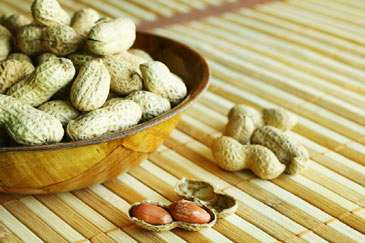The Prevalence of Peanut Allergy

In this article, you will find:
Symptoms and triggers
What Are the Symptoms of an Allergic Reaction?The most common reaction with peanut sensitivity is a feeling of itchiness and a red rash, particularly around the mouth where the food comes in contact with the skin. If the rash and itchiness are limited and are the only symptoms, treatment with an antihistamine (such as Benadryl®) may be sufficient. The AAFA says that if the rash is widespread and other symptoms emerge, such as asthma and digestive symptoms, the reaction should be considered systemic or "anaphylactic." Swelling of the tongue and throat, difficulty breathing, abdominal pain, vomiting, and a change in the level of alertness are all signs of possible life-threatening anaphylaxis. Any child displaying these symptoms needs immediate medical attention.
If your child has been diagnosed with a peanut allergy, your doctor may prescribe an EpiPen®, a spring-loaded needle that you can shoot directly into the body to deliver the medication when an allergic reaction occurs. After treatment with an EpiPen, the child must be taken to the nearest medical facility for observation, since a delayed reaction may occur anywhere from four to six hours later, requiring additional treatment.
What Foods Should Be Avoided?The American Academy of Allergy, Asthma & Immunology cautions that anyone who is allergic to peanuts should avoid the following ingredients:
- Artificial nuts, beer nuts, ground nuts, mixed nuts, monkey nuts, nut pieces
- Cold pressed, expelled, or extruded peanut oil or arachis oil
- Mandelonas
- Peanut butter, peanut flour
- Items that may include peanut protein: African, Chinese, Indonesian, Mexican, Thai and Vietnamese dishes; baked goods; candy; chili; egg rolls; enchilada sauce; flavoring; marzipan; nougat, and sunflower seeds
The AAFA adds these foods to the above list:
- Muesli and other cereals
- Ice creams
- Soups
- Natural flavoring
- "Health foods" - nutrition and energy bars and other sweets
- Sauces
It is important to read all labels with every purchase. Just because a product was safe the last time you purchased it doesn't mean the ingredients have stayed the same. When you eat out, never be shy about asking for the ingredients of a dish.
If your child has a severe peanut allergy, there are other precautions you should take to avoid problems. While smelling peanut butter won't cause a reaction, skin contact will. If there are any peanut butter eaters in your house or your friends' houses, any surfaces the allergic child is likely to touch should be washed with soap and water (e.g., tabletops and countertops, toys, doorknobs, etc.). Remember, too, that cross-contamination can easily occur if a knife that was used to spread peanut butter is then dipped into a jelly jar without first being washed. Inhaling peanut dust (which was a problem on airlines when planeloads of people ripped open bags of peanuts) can also cause a reaction.

